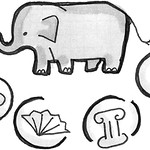Closing the Loop

Systems Thinking for Designers
As design continues to impact our products, services, and solutions at scale, it is more important than ever to understand the systems and context that surround design decisions. Closing the Loop will help you make the invisible visible. It will introduce you to a powerful systems thinking mindset, and provide you with the tools and frameworks to define the systems that surround your work.
As design continues to impact our products, services, and solutions at scale, it is more important than ever to understand the systems and context that surround design decisions. Closing the Loop will help you make the invisible visible. It will introduce you to a powerful systems thinking mindset, and provide you with the tools and frameworks to define the systems that surround your work.
Testimonials
Cababa’s book comes at a crucial moment for design, and points the way toward a more inclusive, meaningful future for our work.
David Dylan Thomas, author, Design for Cognitive Bias
Cababa reminds us of what design was intended to be: a force for positive impact. Through relatable examples and frameworks for thinking plus doing, this book is a guide for designers to practice the design we all want.
Masuma Henry, Design Director, Google
Cababa’s timely guide to systems thinking is the catapult that designers need to progress and take on the critical societal challenges that lie ahead.
Brandon Schauer, Rare.org’s leader of Climate Culture
As an anthropologist, I know the value of bringing a systems perspective to designing for change. Sheryl’s book is a thoughtful guide for designers seeking to bring more systems thinking to their craft.
Tracy Pilar Johnson, Design Anthropologist, Bill & Melinda Gates Foundation
This is a must-have book for practitioners developing products and services at every level.
Jose Coronado, Executive Director Digital Experience Design, J.P. Morgan
Design helps people by offering thoughtful solutions, which can also bring unintended consequences. Sheryl’s book urges us to broaden our perspective and provides valuable guidance to bring into daily practice.
Hung-Hsiang Chen, Head of UX & HF at ConvaTec
Table of Contents
Foreword by Kevin Bethune
Chapter 1: The Shortcomings of User-Centered Design
Chapter 2: A Systems-Thinking Mindset
Chapter 3: Systems Thinking and Design Thinking
Chapter 4: Collecting Your Data
Chapter 5: Synthesis and Mapping Stakeholders
Chapter 6: Mapping Forces
Chapter 7: Creating a Theory of Change
Chapter 8: Anticipating Unintended Consequences
Chapter 9: Speculative Design Futures
FAQ
These common questions and their short answers are taken from Sheryl Cababa’s book Closing the Loop: Systems Thinking for Designers. You can find longer answers to each in your copy of the book, either printed or digital version.
- What do you mean by systems thinking?
This is a very good question because you’d be surprised at how many different answers there are to this question. For example, there are ideas and practices oriented around hard systems methodology, which is focused primarily on finding and enacting effciencies within a given system. This includes approaches such as systems engineering.In this book, your main concern will be oriented around soft systems methodology, which can be described as understanding a problem space, creating a holistic view of it, and considering where intervention can happen to create certain outcomes.
Sample Chapter
This is a sample chapter from Sheryl Cababa’s book Closing the Loop: Systems Thinking for Designers. 2023, Rosenfeld Media.
Chapter 1: The Shortcomings of User-Centered Design
As a designer working in technology, I never thought I would see Black Mirror, the BBC show focused on a future of dystopian technologies, used for product inspiration.
I was in an ideation workshop with a client team that was working on a design strategy for augmented reality. We were talking about potential features and adding sticky notes with ideas to a whiteboard. During our discussion, we started talking about potential unintended consequences to features and design decisions. One of my colleagues brought up an example from the show Black Mirror in which soldiers, implanted with an augmented reality system, saw other humans as monsters that must be killed.













